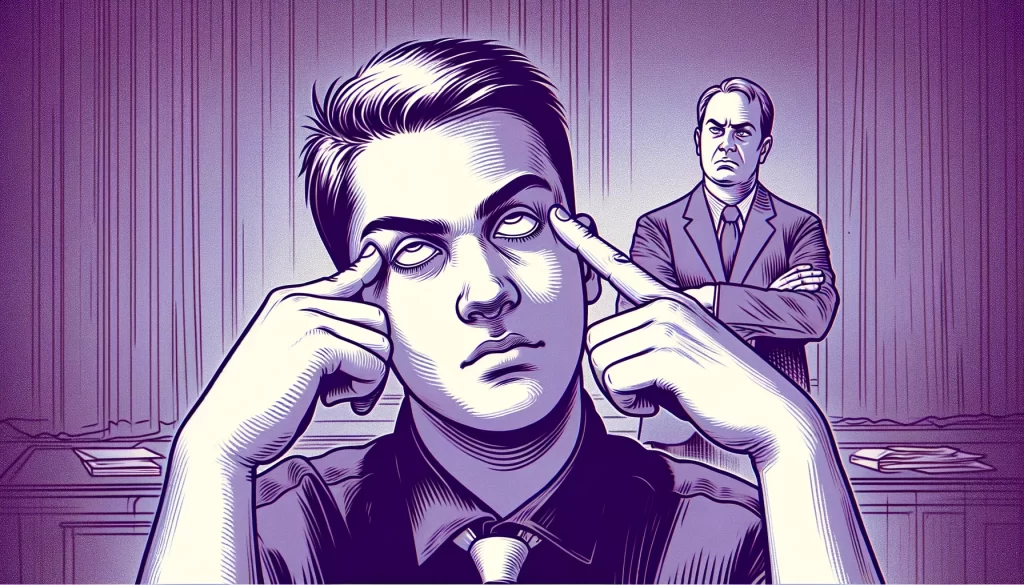Micromanagement can be a frustrating experience for any employee. Dealing with a micromanager, someone who constantly controls and scrutinizes your every move, can affect your productivity, morale, and overall well-being in the workplace. In this article, we will explore what micromanagement is, why people engage in this behavior, and more importantly, how you can effectively manage a micromanager.
Key Takeaways:
- Micromanagement can negatively impact productivity, employee morale, and staff retention.
- Micromanagers lack trust in their subordinates and hold a need for excessive supervision.
- Recognizing the signs of a micromanager can help you navigate this challenging work dynamic.
- Micromanagement hinders overall management tasks, creates a climate of fear and stress, and stifles innovation and professional growth.
- Strategies for handling micromanagers include clear communication, setting boundaries, focusing on results, and seeking external support.
What is Micromanagement?
Micromanagement is a management style characterized by controlling behavior, a lack of trust, and a need for excessive supervision. It involves getting involved in the details of projects or tasks that should be delegated to competent and trustworthy staff.
Micromanagers often struggle with delegating tasks, preferring a hands-on management approach instead. They believe that no one can do the job as well as they can, leading to a lack of trust in their employees’ abilities. This controlling behavior can stem from various underlying reasons, such as a lack of confidence in their team or a fear of failure.
When individuals exhibit micromanagement tendencies, they often provide constant scrutiny, offering approval or disapproval at each step. They struggle to let go of control, frequently changing priorities, and getting caught up in the minute details rather than focusing on the bigger picture.
Micromanagement can have negative consequences on both individuals and the overall workplace dynamic. It hinders the growth and development of employees, stifles creativity and innovation, and creates a climate of fear and stress. Recognizing and addressing micromanagement is crucial for fostering a healthy and productive work environment.
Why do people micromanage?
Micromanagement behavior can arise due to several factors, including:
- Lack of trust: Micromanagers may struggle to trust their team members’ capabilities and feel the need to be involved in every decision and task.
- Perfectionism: Some micromanagers have high standards and an intense desire for everything to be done exactly as they envision.
- Need for control: Micromanagers often feel the need to have control over every aspect of a project, leading them to micromanage every detail.
- Lack of confidence: Micromanagers may lack confidence in their team’s abilities, leading them to micromanage out of fear of failure.
- Micromanagement as an accepted management style: Some managers have been conditioned to believe that micromanagement is an effective way to ensure work is done correctly.
It’s important to address and overcome micromanagement tendencies to create a more trusting, collaborative, and productive work environment.
| Effects of Micromanagement | |
|---|---|
| 1 | Stifles creativity and innovation |
| 2 | Creates a climate of fear and stress |
| 3 | Reduces employee morale and motivation |
| 4 | Impacts employee job satisfaction and retention |
| 5 | Decreases productivity and efficiency |
Recognizing a Micromanager
In the workplace, effective leadership plays a crucial role in fostering a positive and productive environment. However, there are instances when a leader’s management style can be detrimental to the overall workplace dynamic. This is particularly true for individuals who exhibit micromanaging tendencies, often leading to frustration and dissatisfaction among team members. Recognizing the signs of a micromanager is essential in addressing this issue and promoting a healthier work atmosphere.
Telltale Signs of Micromanagement
Identifying whether you are working for a micromanager or if you possess these tendencies yourself can help bring awareness to the situation and allow for appropriate action. Here are some common behaviors to look out for:
- Constant approval-seeking: Micromanagers often require validation at each step of a project and are hesitant to make decisions independently.
- Lack of delegation: Micromanagers have difficulty entrusting tasks to their team members, resulting in a centralized decision-making process.
- Frequent changing priorities: Micromanagers tend to frequently shift their focus and priorities, causing confusion and stress among the team.
- Overemphasis on details: Micromanagers often get bogged down in minor details, losing sight of the bigger picture and hindering progress.
Recognizing these signs can help individuals navigate workplace challenges and better understand the dynamics influenced by micromanagement. Creating an environment that values creativity, trust, and open communication is essential to fostering a positive and productive workplace.

The Detrimental Effects of Micromanagement
Micromanagement can have severe and far-reaching consequences on both individuals and the overall workplace dynamic. When leaders fall into the trap of micromanaging their employees, it not only hinders their ability to focus on important management tasks but also contributes to a toxic work environment characterized by low trust and engagement.
One of the most significant effects of micromanagement is the stifling of creativity and innovation. When employees feel constantly scrutinized and controlled, they become hesitant to take risks or think outside the box. This lack of freedom and autonomy hampers their ability to come up with fresh ideas and limits their potential for professional growth.
Moreover, micromanagement erodes trust between managers and their team members. By constantly second-guessing and interfering in even minor decisions, micromanagers communicate a lack of confidence in their employees’ abilities. This lack of trust fosters an environment of doubt and insecurity, where employees feel disempowered and demotivated.
Additionally, micromanagement creates a climate of fear and stress, which can lead to decreased job satisfaction and even burnout. When employees are constantly under surveillance and afraid of making mistakes, their overall well-being and mental health are compromised. This ultimately affects their productivity and performance, further exacerbating the negative impact of micromanagement.
In the increasingly popular hybrid work models, where employees have more flexibility and freedom to work remotely, the detrimental effects of micromanagement can be amplified. The lack of direct supervision can intensify micromanagers’ tendencies, fueling constant checking-in, excessive communication, and a lack of trust in employees’ ability to work independently.
In conclusion, micromanagement is a leadership style that has significant negative consequences for both individuals and the overall workplace dynamic. Its effects include the hindrance of managerial focus, the erosion of trust and engagement, the stifling of innovation, and the creation of a climate of fear and stress. Recognizing and addressing micromanagement is crucial for fostering a positive work environment that promotes growth, productivity, and employee satisfaction.
Strategies for Handling a Micromanager
Dealing with a micromanager can be challenging, but there are effective strategies you can employ to navigate this situation and maintain your sanity in the workplace.
First and foremost, clear communication is key. Make an effort to establish open lines of dialogue with your micromanager. Seek clarification on expectations and deliverables, and proactively provide progress updates to keep them informed. By fostering transparent communication, you can alleviate their need for constant oversight and demonstrate your competence in managing your responsibilities.
Setting boundaries is another crucial tactic. Clearly define your role and responsibilities, and politely but firmly establish boundaries around their involvement. Express your desire for autonomy and trust, while assuring them that you are committed to meeting objectives. By setting these professional boundaries, you can create space for yourself to work efficiently and effectively.
Focusing on results is also crucial when dealing with a micromanager. Shift their attention from the nitty-gritty details to the outcomes and impact of your work. Provide regular updates on progress and highlight the achievements and milestones you have accomplished. By consistently demonstrating your ability to deliver results, you can build trust and gradually reduce their micromanagement tendencies.
FAQ
What is micromanagement?
Micromanagement involves getting involved in the details of projects or tasks that should be delegated to competent, trustworthy staff. It is characterized by a lack of trust and a need for excessive supervision.
Why do people micromanage?
People micromanage for various reasons, such as a lack of confidence, a fear of failure, or a need for control. Micromanagers often struggle to delegate tasks and trust others to handle the work effectively.
How can I recognize a micromanager?
Micromanagers exhibit certain behaviors such as constantly seeking approval at each step, avoiding delegation, frequently changing priorities, and focusing on trivial details rather than the big picture. They may also display a lack of trust in their team members’ abilities.
What are the detrimental effects of micromanagement?
Micromanagement can have detrimental effects on both individuals and the overall workplace dynamic. It hinders the manager’s ability to focus on overall management tasks, creates a lack of trust and engagement among employees, stifles innovation and professional growth, and creates a climate of fear and stress.
How can I handle a micromanager?
Handling a micromanager requires clear communication, setting boundaries, demonstrating competence, focusing on results, seeking and providing feedback, and finding ways to alleviate the micromanagement tendencies. Seeking external support, such as a career coach or mentor, can also be helpful in managing the situation effectively.

